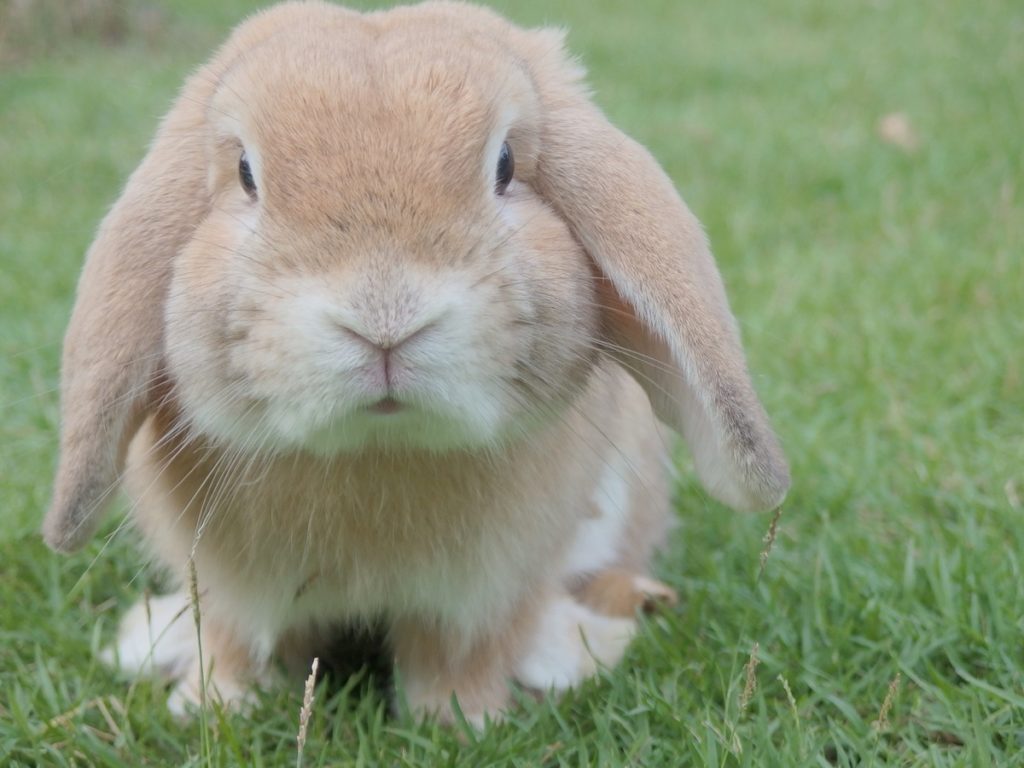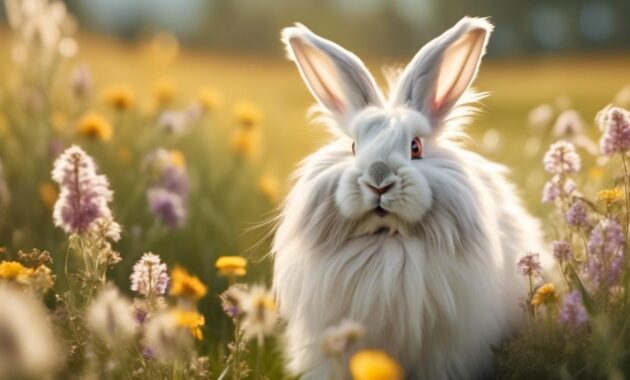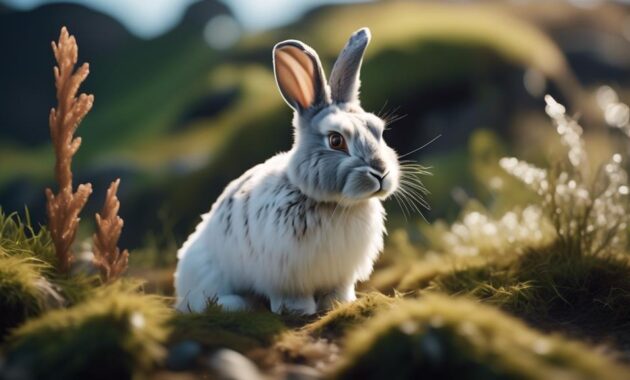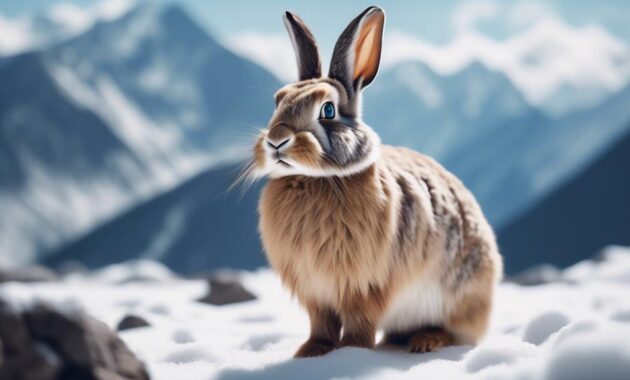
Looking for a new pet that combines the majesty of Alaska with the cuddliness of a rabbit? Well, look no further, because the Alaska Rabbit is here to fulfill all your pet dreams.
This enchanting breed not only boasts a well-rounded body shape but also possesses a temperament that will make your heart melt.
But wait, there’s more! The Alaska Rabbit is the perfect companion for all – whether you’re a seasoned pet owner or a novice.
So, what are you waiting for? Get ready to embark on a journey of discovery as we delve into the world of the majestic Alaska Rabbit.
Key Takeaways
- The Alaska Rabbit is a medium-sized breed with a sturdy physique and a lifespan of 7-10 years.
- They have an outgoing and gentle temperament, making them suitable for all experience levels and compatible with children and other pets.
- The breed’s history and origin can be traced back to Germany, where it was created to mimic the Alaskan Fox fur trade.
- Proper care includes providing suitable living space, maintaining a balanced diet, and regular healthcare, including vaccinations and parasite prevention.
Size and Lifespan of Alaska Rabbits
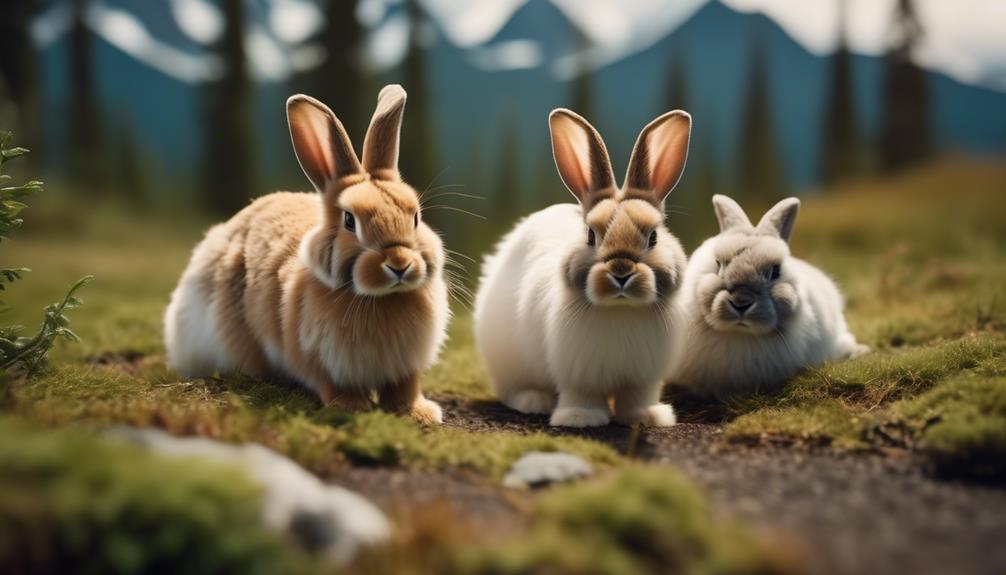
The Alaska Rabbit is a medium-sized breed known for its balanced and well-rounded body shape, weighing an average of 7-9 lb and having a lifespan of 7-10 years. With good bone development, this breed stands out for its sturdy and proportional physique.
As a rabbit owner, you can expect a rabbit that’s just the right size, not too big or too small. In terms of lifespan, Alaska Rabbits live relatively long lives compared to some other breeds. This means that you can enjoy their companionship for several years.
It’s important to keep in mind that individual rabbits may vary in size and lifespan, but these are the general characteristics of the Alaska Rabbit breed.
Temperament and Personality Traits
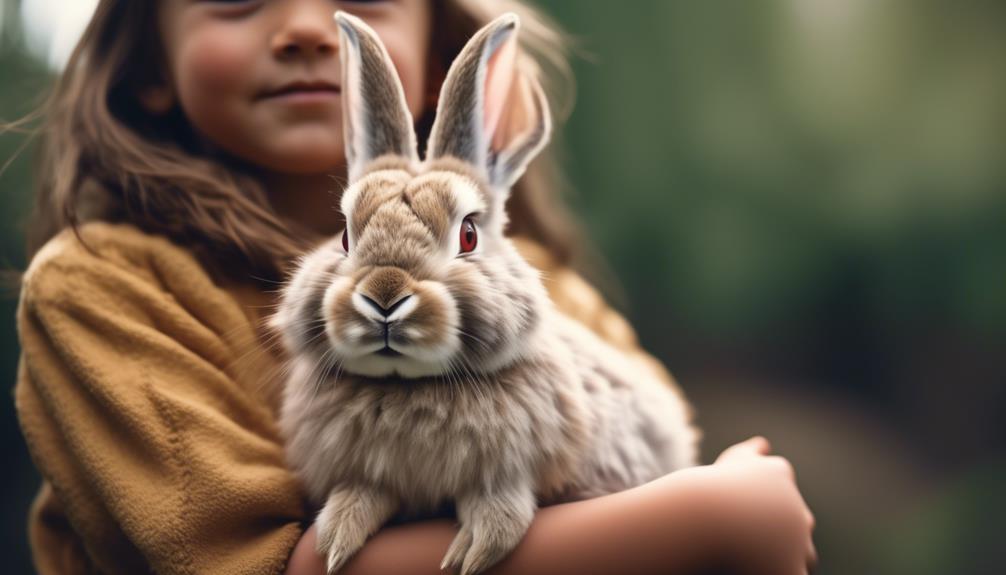
After learning about the size and lifespan of Alaska Rabbits, let’s now explore their temperament and personality traits.
Alaska Rabbits are outgoing, gentle, good-natured, and social animals. They’re known for being good-tempered and docile, making them suitable for rabbit owners of all experience levels.
They can be kept in families with older children and other pets, as they’re friendly and adaptable. Alaska Rabbits are also smart and litter trainable, making them easy to care for.
Their friendly and social nature allows them to bond well with their owners, creating a strong and loving relationship.
Suitable for All Experience Levels
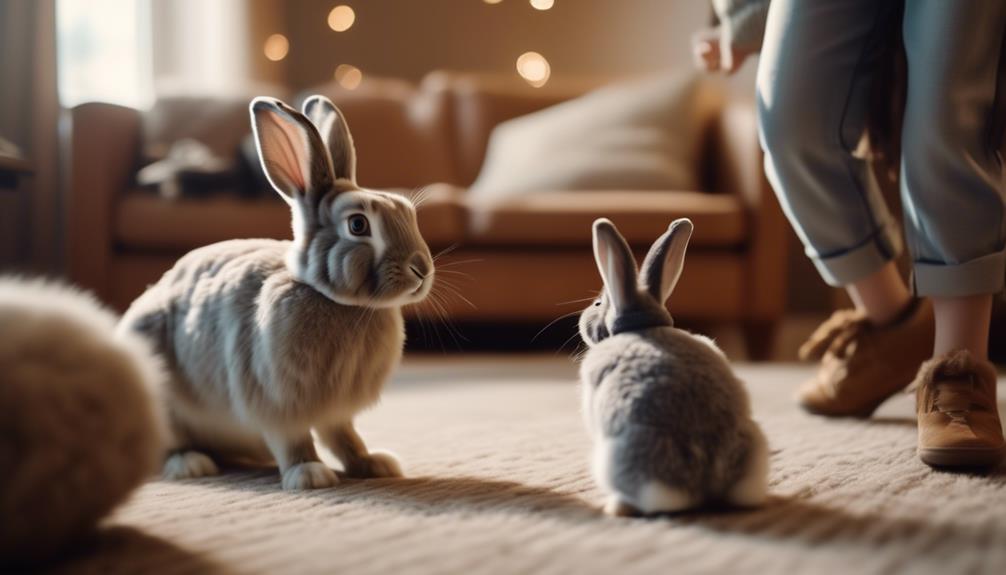
Whether you’re a seasoned rabbit owner or a beginner in the world of pet rabbits, the Alaska Rabbit is the perfect choice for you. Here’s why:
- Easy to Handle: Alaska Rabbits have a good temperament and are known for being gentle and friendly. They’re suitable for rabbit owners of all experience levels, including families with older children and other pets.
- Trainable and Sociable: These rabbits are smart and can be easily litter trained. They enjoy socializing with humans and other animals, making them a great addition to any household.
- Low Maintenance: Alaska Rabbits have a short, luxurious coat that’s easy to groom. They can be kept indoors or outdoors, as long as they’ve a secure area for sunbathing and a shaded spot for retreat. Their diet consists of high-quality pellets, hays, greens, and vegetables.
With their adaptable nature and friendly disposition, Alaska Rabbits are the ideal choice for all rabbit enthusiasts, regardless of their level of experience.
Compatibility With Children and Other Pets
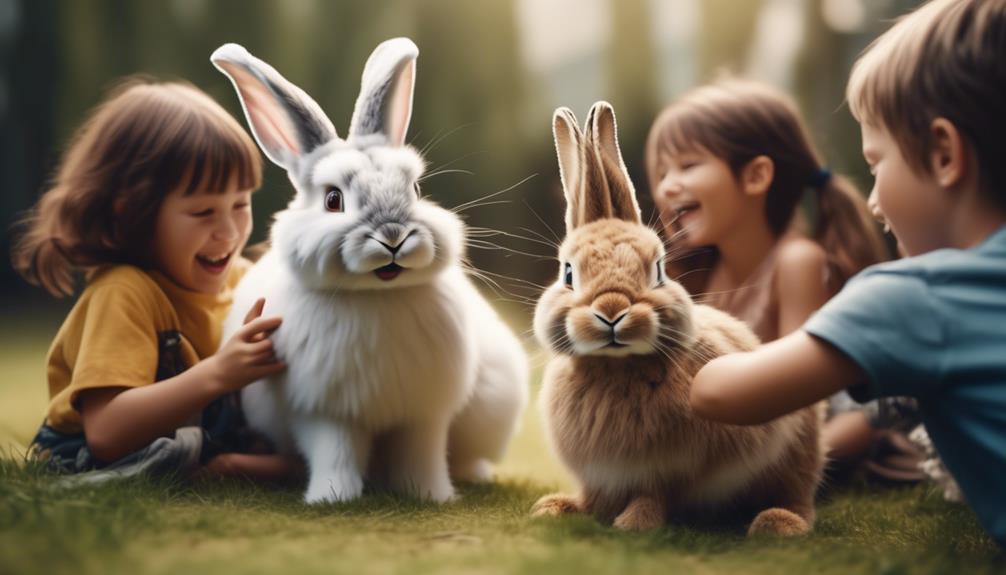
Alaska Rabbits are highly compatible with both children and other pets, making them an excellent choice for families looking to add a new furry member to their household. These rabbits have a gentle and good-natured temperament, making them well-suited for families with older children. They’re known for being social and friendly, and can easily adapt to living with other pets in the household.
Their outgoing nature and docile behavior make them suitable for rabbit owners of all experience levels, including families who may be new to owning rabbits. With their smart and litter trainable nature, Alaska Rabbits can easily become a beloved member of the family, providing joy and companionship to both children and other pets.
History and Origin of the Alaska Rabbit Breed
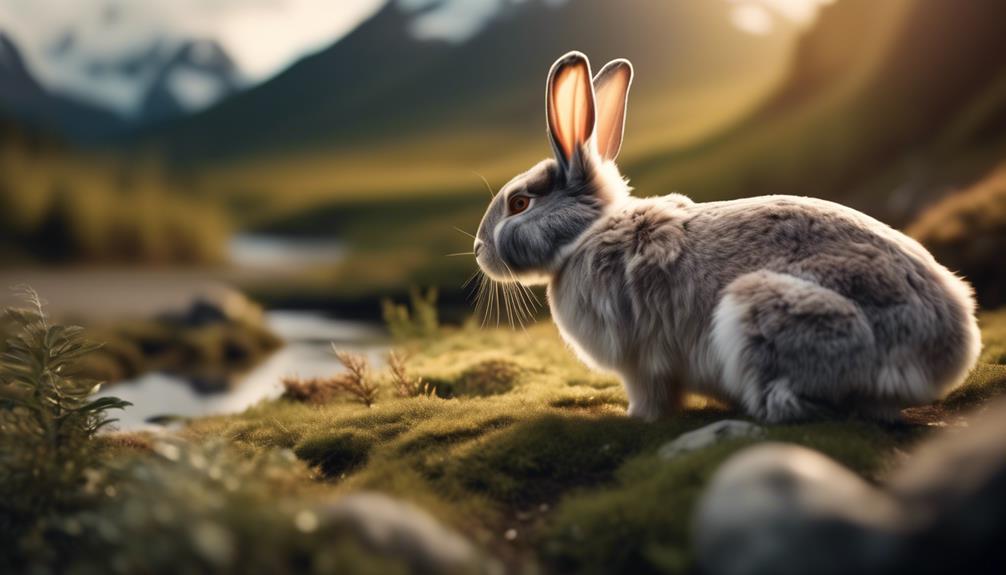
To understand the history and origin of the Alaska Rabbit breed, we need to delve into its fascinating development in Germany using various rabbit breeds. Here is a brief overview of its history:
- Development: The Alaska Rabbit breed was created in Germany by crossing Champagne d’Argent, Dutch, Havana, and Himalayan rabbits. The goal was to mimic the Alaskan Fox fur trade.
- Coat Color: Surprisingly, the coat of the Alaska Rabbit turned out to be intensely black, with long glossy black guard hairs. The deep slate blue color near the skin gives it a vibrant appearance.
- Recognition: The Alaska Rabbit breed was recognized as a distinct breed in Europe in 1907 and later by the British Rabbit Council (BRC).
The history and origin of the Alaska Rabbit breed highlight its unique development and striking coat color, making it an intriguing and distinctive breed.
Coat Characteristics and Color Variations
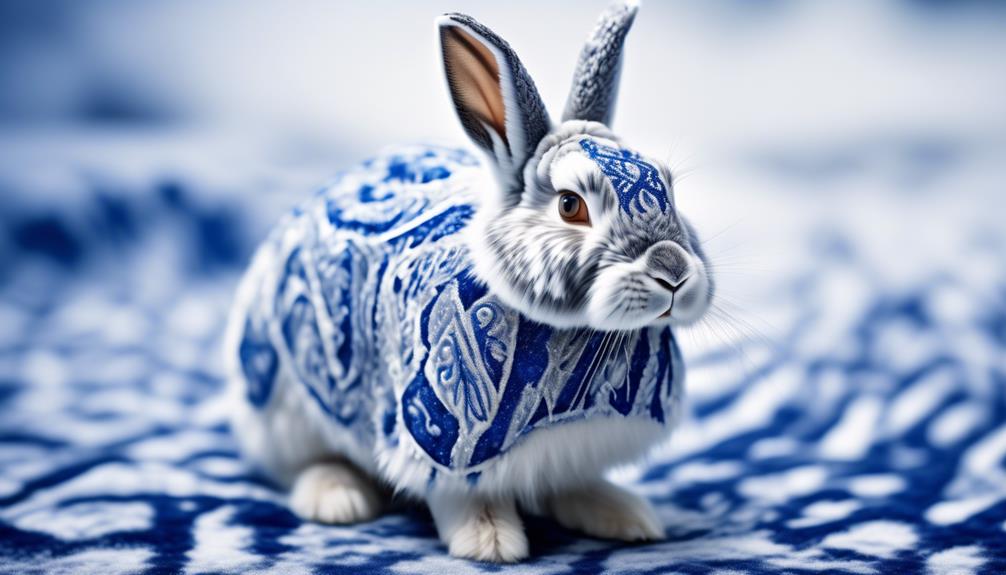
If you’re curious about the Alaska Rabbit’s coat characteristics and the color variations it comes in, you’ll be delighted to learn about its unique features.
The Alaska Rabbit has a short, luxurious, soft, and dense coat that’s incredibly eye-catching. Its coat is solid black with deep slate blue near the skin, creating a vibrant color on the sides and top of the rabbit. The pads of its feet, belly, and nose have a matte black hue, which adds to its distinctive appearance.
The fur of the Alaska Rabbit is lustrous and silky, with a glossy sheen that’s truly mesmerizing. With its stunning coat and color variations, the Alaska Rabbit is sure to be a beautiful and captivating pet.
Proper Care and Housing Requirements

When caring for an Alaska Rabbit, it’s important to understand the proper care and housing requirements to ensure the health and well-being of your furry friend. Here are the key things to keep in mind:
- Provide a suitable living space:
- Your Alaska Rabbit can be kept indoors or outdoors.
- If kept indoors, make sure to rabbit-proof your home to prevent any accidents.
- If kept outdoors, create a secure area for your rabbit to sunbathe and provide a shaded spot for retreat.
- Maintain a balanced diet:
- Feed your rabbit a diet that includes high-quality pellets, hays, greens, and vegetables.
- This will provide the necessary nutrients for their overall health and well-being.
- Regular healthcare:
- Vaccinate your Alaska Rabbit against diseases like VHD and myxomatosis.
- Treat them regularly for worms, ticks, and fleas.
- This will help prevent any potential health issues and keep your rabbit happy and healthy.
Indoor or Outdoor Living Options
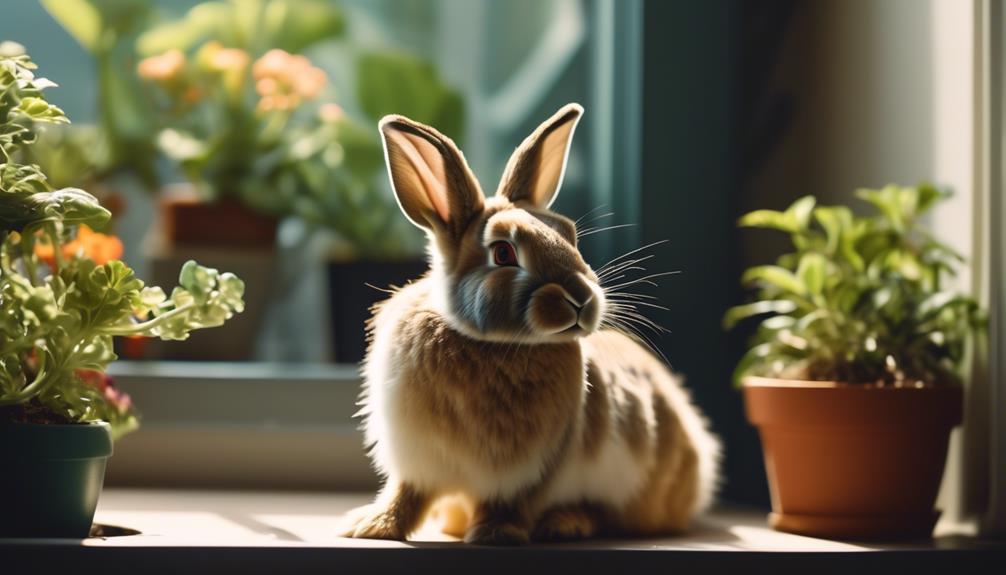
Consider whether you prefer to keep your Alaska Rabbit indoors or outdoors. While Alaska Rabbits can adapt to both living environments, there are a few factors to consider.
If you choose to keep your rabbit indoors, make sure to rabbit-proof your home by securing electrical cords and protecting furniture from chewing. Provide a spacious and comfortable living area with plenty of hiding spots and toys for mental stimulation.
If you decide to keep your rabbit outdoors, ensure they have a secure enclosure that protects them from predators and extreme weather conditions. Include a shaded area for retreat and a secure spot for sunbathing. Regularly check the enclosure for any potential hazards and provide fresh water and food daily.
Regardless of your choice, make sure to spend quality time with your Alaska Rabbit, as they thrive on social interaction.
Nutritional Needs and Dietary Recommendations

To ensure optimal health and well-being for your Alaska Rabbit, it’s important to understand their nutritional needs and follow dietary recommendations. Here are three key points to keep in mind:
- Provide a balanced diet: Feed your Alaska Rabbit a combination of high-quality pellets, fresh hay, greens, and vegetables. Pellets should make up the majority of their diet, while hay helps maintain proper digestion. Offer a variety of greens and vegetables to ensure they receive essential nutrients.
- Avoid overfeeding: Obesity can lead to health problems in rabbits, so it’s crucial to monitor their food intake. Follow the recommended portion sizes and avoid excessive treats. Additionally, ensure your rabbit has access to fresh water at all times.
- Consult a veterinarian: Seek professional advice to determine the specific nutritional needs of your Alaska Rabbit. A veterinarian can provide guidance on portion sizes, dietary supplements, and any specific dietary restrictions or considerations based on your rabbit’s health condition.
Health Considerations and Preventative Measures

Ensure the well-being of your Alaska Rabbit by taking proactive measures to maintain their health.
Regular veterinary check-ups are essential to monitor their overall health and catch any potential issues early on.
Additionally, it’s crucial to maintain a proper diet for your rabbit, including high-quality pellets, hays, greens, and vegetables.
Provide them with a secure and safe living environment, whether indoors or outdoors, ensuring they’ve access to a shaded spot for retreat and a secure area for sunbathing.
Rabbit-proofing your home is necessary if they’re kept indoors, as these curious creatures can get into mischief.
Vaccinations against diseases such as VHD and myxomatosis, as well as regular treatment for worms, ticks, and fleas, are vital preventative measures to safeguard their health.
Frequently Asked Questions
Are Alaska Rabbits Good for People With Allergies?
Yes, Alaska rabbits are good for people with allergies. They have a short, dense coat that produces less dander, making them a hypoallergenic option. However, it’s always best to spend time with the rabbit to ensure there are no adverse reactions.
How Often Should Alaska Rabbits Be Groomed?
Alaska rabbits should be groomed regularly to maintain their luxurious coats. Brush them at least once a week to remove loose fur and prevent matting. This helps keep them clean and reduces the risk of hairballs.
Do Alaska Rabbits Require a Lot of Exercise?
Alaska rabbits do require a good amount of exercise to stay happy and healthy. Regular playtime and access to a secure outdoor area for sunbathing are important. Make sure to provide plenty of enrichment to keep them mentally stimulated as well.
Can Alaska Rabbits Be Trained to Use a Litter Box?
Yes, Alaska rabbits can be trained to use a litter box. They are smart and easily trainable. With patience and consistency, you can teach them to use a litter box just like any other pet.
Are Alaska Rabbits Prone to Any Specific Health Issues?
Alaska rabbits are generally healthy, but like all rabbits, they can be prone to certain health issues. Common problems include dental issues, gastrointestinal stasis, and respiratory infections. Regular veterinary check-ups and proper care can help prevent these problems.
Are Siberian Rabbits as Low-Maintenance as Alaska Rabbits as Pets?
Yes, the fascinating Siberian rabbit breed is known for being low-maintenance, just like Alaska rabbits. Both breeds make great pets for those seeking an easy-going and independent companion. With proper care and attention, these rabbits can thrive in a variety of environments and make wonderful additions to any household.
Conclusion
In conclusion, the majestic Alaska Rabbit is a perfect pet for all. With their balanced body shape and gentle temperament, they’re suitable for both experienced and first-time rabbit owners. They easily adapt to families with older children and other pets, making them a great addition to any household.
Their luxurious black coat, inspired by the Alaskan Fox fur trade, is a sight to behold. With proper care and a nutritious diet, the Alaska Rabbit will bring joy and companionship to your home.

